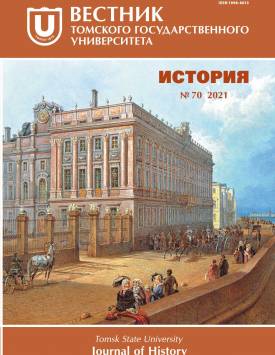“Anti-raskol” state confessional policy in Russia during the reign of Peter I
Relying on modern methodological tools, the article examines the little-studied aspects of the evolution of the Russian state-confessional policy conducted in relation to the Old Believers during the reign of Peter I. The documentary basis of the study is normative acts dispersed both in the Code of Laws of the Russian Empire and in a specialized collection of the Ministry of the Internal Affairs. The authors note that legislation that had a pronounced anti-Old Believer discriminatory orientation was developed and was in force during this period. Attracting foreign adherents of a different faith to the country, the government of Peter I allowed them to perform religious rites without obstacles according to their confessional traditions. At the same time, the state issued numerous legislative acts that subjected the dissident Russian subjects of the Empire to severe criminal punishments. The initial tactics of the state terror in relation to opponents of Nikonian church innovations, up to their extermination, did not help, however, to solve the problem of total subordination of the supporters of Orthodox traditionalism to the imperial regime. Therefore, the supreme power was forced to recognize the existence of the Old Believers de facto, legally securing them a discriminatory status and somewhat lowering the level of application of extremely cruel forms of criminal responsibility for belonging to the “split” (“raskol”). If the leaders and adherents of the Old Believers were actually outlawed until 1716, then amendments were subsequently made to imperial legislation, according to which the adherents of Old Believer Orthodoxy were exempted from criminal punishment under the condition of their “entry into the split.” On the other hand, the goal of the legislation was to drastically reduce the volume of religious and estate-civil rights of the Old Believers in order to limit their physical existence to the framework of one generation. Such a relative softening of the policy did not lead to the refusal of the authorities from the “anti-splinter” policy as a whole and from the legal recognition of Old Believers as state criminals. At the same time, their conditional legalization with double taxation allowed, firstly, to significantly replenish the state treasury. Secondly, it provided statistical accounting for the adherents of the “split” and the corresponding administrative control. True, many of the supporters of the Old Believers stubbornly avoided registering in state-owned institutions. They expressed their protest in passive forms of resistance (shoots, mass selfimmolations, harboring of those persecuted for their faith, etc.). From that moment, large regional Old Believer centers began to take shape: Vetka, Vygovshchina, Nizhny Novgorod, Starodubye, etc. So, in our opinion, the maximum state-confessional political course of the Petrine era was reduced to an attempt to eliminate the Old Believers as an undesirable social and religious popular movement that resisted the imperial authorities. Moreover, discrimination of this group of the Russian population was simultaneously accompanied by the extraction of practical (fiscal) benefits in the interests of the state.
Keywords
discrimination, imperial legislature, state confessional policy, Peter I, Old Belief, Raskol (Orthodox)Authors
| Name | Organization | |
| Ilyin Vsevolod N. | Altai State University; Russian Presidential Academy of National Economy and Public Administration | vse-ilin@mail.ru |
| Dolzhikov Vyacheslav A. | Altai State University | dolshikov@yandex.ru |
References

“Anti-raskol” state confessional policy in Russia during the reign of Peter I | Tomsk State University Journal of History. 2021. № 70. DOI: 10.17223/19988613/70/3
